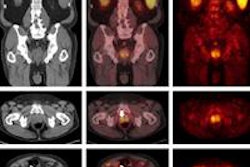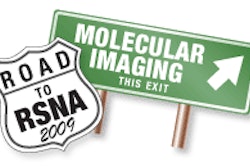Monday, November 30 | 11:20 a.m.-11:30 a.m. | SSC09-06 | Room S504CD
In this scientific session presentation, researchers from Johns Hopkins University in Baltimore will present preliminary data indicating that C-11 acetate PET/CT imaging has higher sensitivity than FDG imaging for detecting primary prostate cancer, local recurrence, and apparent nodal spread in both staging and restaging.Prostate cancer patients in whom traditional imaging was inconclusive underwent dual radiotracer PET/CT imaging utilizing C-11 acetate and FDG on the same day. A total of 26 studies in 26 patients were performed over a one-year period from March 2008 to March 2009.
In reviewing the clinical information for 25 of those patients, researchers found that eight of the 25 patients were referred for staging, while 17 of the 25 patients were referred for restaging with a clinical suspicion and/or biochemical evidence of recurrence.
In the eight-patient staging population, C-11 acetate imaging was positive in six of eight patients in identifying a primary prostate cancer. In comparison, FDG was falsely negative in seven of eight studies, while correctly identifying intraprostatic disease in only one patient.
"The problem with prostate cancer is that it is slow-growing, so FDG is not taken up at all," said co-author Muhammad Chaudhry, a fellow at Johns Hopkins. "Even if prostate cancer is well differentiated in its early states, acetate can detect cancer at that stage. It is not as dependent on the size [of the tumor] as FDG."
In addition, C-11 acetate imaging was able to detect apparent nodal disease in one staging patient, while FDG was negative in all eight staging studies. C-11 acetate imaging positively identified apparent local recurrence in the prostate bed in six of 17 restaging patients, while FDG imaging was negative in all 17 patients.




















